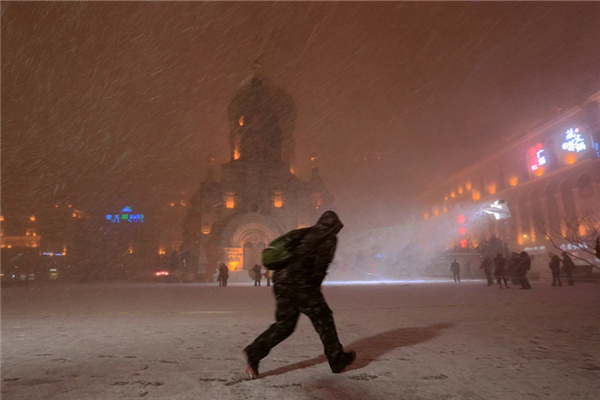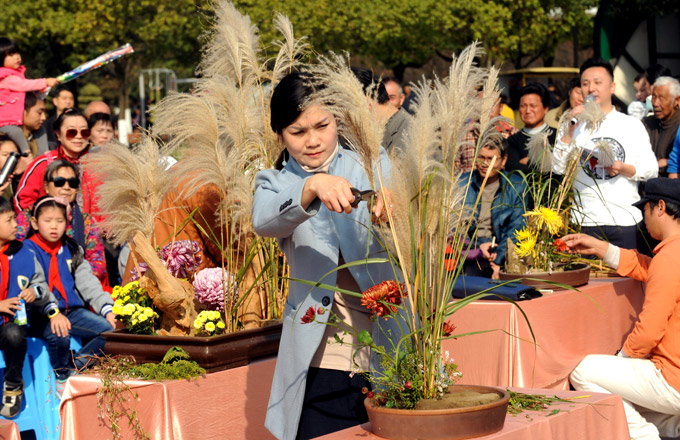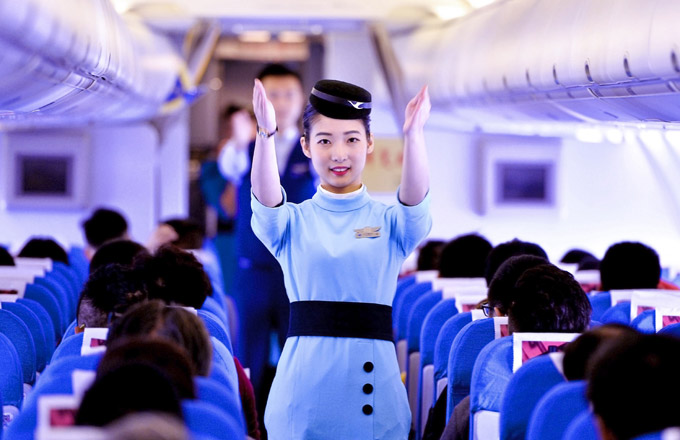

|
Zhang Hemin, director of the China Conservation and Research Center for the Giant Panda, presents Klaus Maier, president and CEO of Mercedes-Benz (China) Ltd, with the adoption certificate for twin pandas Xingrui and Xinghui. |
For the baby pandas born after last year's earthquake, few gifts could be more welcome than a shining new home.
The lucky black-and-white babies, most of them just a year old, appeared healthy and peppy at the August 20 opening ceremony of the new Mercedes-Benz Giant Panda Kindergarten in Ya'an, Sichuan province.
Two months earlier, Mercedes-Benz (China) Ltd signed a three-year partnership agreement with the China Conservation and Research Center for the Giant Panda (CCRCGP), to help renovate the temporary panda kindergarten, which was overloaded after the devastating earthquake destroyed large areas of panda habitat.
The auto giant has also donated special food, medicines and equipment like incubators for raising baby pandas.
Mercedes-Benz has also agreed to a lifetime adoption of a pair of twin baby pandas, Xinghui and Xingrui, whose names are derived from stars, which is also the symbol on the Mercedes-Benz badge. Their names were proposed and voted on by employees of the automaker.
Sixteen students from Jushui Primary School of Mianyang, a city also hit by the Sichuan earthquake, were invited to attend the opening ceremony and to visit the new kindergarten.
Li Jiaxin was one of the children in attendance. Clasping a fluffy toy panda, a gift Mercedez-Benz provided for the children, she kept it with her during the ceremony, sightseeing and even at the dinner table.
"I love pandas," said the 11-year-old. "And I am so glad to be here."
Green Legacy Program
The leading automaker is no stranger to panda preservation efforts.
Mercedes-Benz has donated to Sichuan giant panda sanctuaries since 2007, when it first launched the Green Legacy program in China, a long-term partnership with the United Nations Educational, Scientific and Cultural Organization (UNESCO) to protect World Natural Heritage Sites in China.
The program has already covered two natural heritage sites in China, the Sichuan panda sanctuaries and the south China's karst formations. A third site, Lushan Mountain, was recently brought into the program. Total donation from Mercedes-Benz has reached 13 million yuan.
Collaborating with UNESCO and local authorities, Mercedes-Benz help for the Sichuan sanctuaries includes establishment of observation stations with geographic information systems, replanting bamboo, establishing habitat corridors, training staff and providing education for locals on how they can assist.
While before mainly assisting in protection of pandas in the wild, Mercedes-Benz broadened its involvement to artificial breeding when it founded the kindergarten.
"In the long term, the Mercedes-Benz Giant Panda Kindergarten could be a demonstration project in promoting more social forces to sponsor and support the research on the reproduction of giant pandas and the public education about protecting pandas," said Zhang Hemin, director of CCRCGP,
More than money
Klaus Maier, president and CEO of Mercedes-Benz (China) Ltd, is another panda lover.
"Everyone loves the giant panda, so it's easier to get lots of people involved," he said.
He was glad to see that the Mercedes-Benz dealers in China also contributed a lot to the program. They pay into the Green Legacy fund when they purchase cars from to Mercedes-Benz for resale.
Mercedes-Benz also set up display panels about the program during big auto shows.
"It's not enough that one or two companies donate money - it's more about achieving awareness to protect the environment," Maier said.
He added that it's crucial to greatly reduce auto emissions, as one of the quests of Mercedes-Benz is to find a balance between technological innovation and environment protection.
"In the future, the most pressing issue for automotive manufacturers is to develop an emission-free car, that's the ultimate goal of us."
In fact, Mercedes-Benz will launch a new S-Class hybrid named S400 soon, the world's first with a lithium-ion battery, which uses only 7.9 liters of fuel per 100 kilometers.
(China Daily 09/07/2009 page7)













